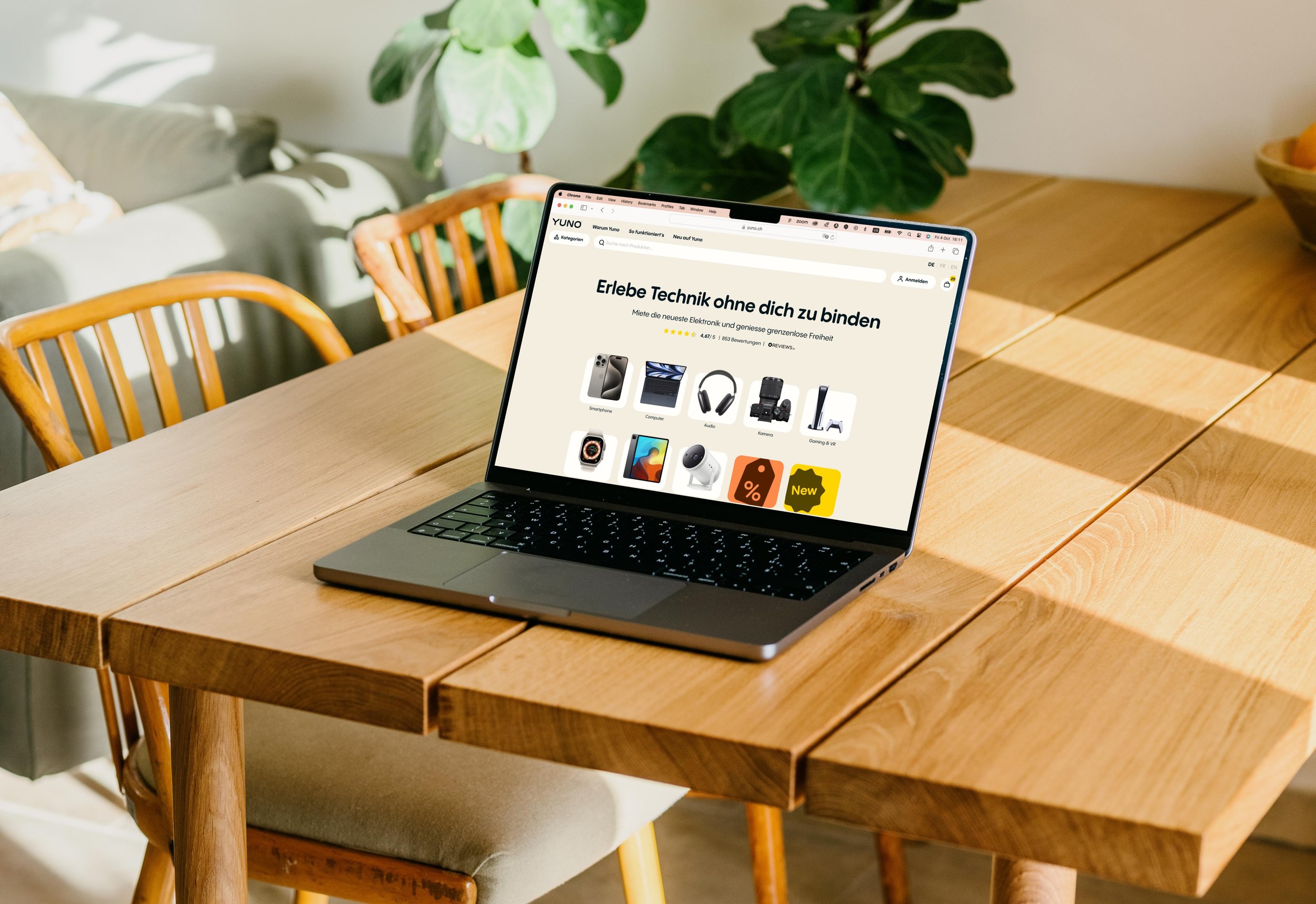From ownership to usership: how Yuno redefined tech access in Switzerland.
In Switzerland, accessing tech often means high upfront costs, frequent upgrades, and wasted devices sitting unused. While ownership dominated the market, many users felt trapped by financial barriers and rigid options. Yuno set out to redefine access to tech products by introducing a flexible rental model that empowers users to pay monthly, adapt to changing needs, and promote sustainability.
PROBLEM STATEMENT
How might we convince Swiss consumers to embrace renting over buying tech products in a market where ownership is the norm? This required not just shifting mindsets but also designing a platform and messaging that clarified the value of renting (affordability, flexibility, and sustainability) while ensuring a seamless user experience.
MY ROLE
As Design Lead and co-founder, I drove the end-to-end design strategy for Yuno, collaborating closely with engineers, marketers, product managers, and researchers. I led the effort to understand user needs, communicate value effectively, and scale the platform, ensuring an iterative, user-centered approach that balanced business goals with user experience.
YUNO’S EVOLUTION
Building a new rental model in a market dominated by ownership.
#1 CHALLENGE
1 .DISCOVERY
Our initial research confirmed that many Swiss consumers struggled with the high cost of tech ownership and were open to alternative models. Surveys and market tests revealed strong interest in renting. However, skepticism around prices and flexible service indicated that a seamless and transparent user experience would be essential.
2 .PROCESS
To build a new rental model in an ownership-driven market, we took a user-centric and agile approach. Using Design Thinking, we uncovered consumer pain points and validated rental-based solutions. Design Sprints helped us test key features like pricing and rental length, while Lean UX enabled rapid iteration based on real feedback, ensuring market alignment.
Design Thinking Approach
Drawing from user feedback and survey data, we held ideation workshops to explore potential solutions, followed by prioritization sessions with the tech team to identify the most impactful ones. Using “How Might We” questions, we reframed challenges. Research insights were synthesized into user personas and key pain points, shaping a clear problem statement. To ensure we focused on high-value, feasible solutions, we ranked ideas using the ICE Score framework, evaluating their Impact, Confidence, and Effort.
Prototyping Strategy
To ensure familiarity and ease of adoption, we analyzed five popular e-commerce platforms, identifying recurring features and reusing key mental models in our design. This included elements like clear navigation structures, transparent pricing displays, streamlined checkout flows, and trust-building signals.
Design Sprint & Lean UX, Testing & Iteration
To validate our approach, we conducted usability testing with early adopters, gathering insights to refine the experience. We ran A/B tests on copy, specifically testing our value proposition to determine the most compelling messaging
THE SOLUTION
In December 2021, we launched the MVP using no-code tools and automation, allowing for a fast and efficient rollout.
The MVP successfully validated market demand and provided key insights for the next iteration:
• Market Validation: Early adopters rented products within the first weeks, confirming interest in a rental model.
• User Feedback: Interviews revealed the need for a broader product catalog and higher-quality visuals to build trust.
• Clarity in Messaging: Some users mistook rentals for purchases, highlighting the need to refine our value proposition and communication strategy.
These insights became the foundation for Yuno’s next phase, shaping our strategy for scaling the platform and strengthening the brand.
THE IMPACT
Within three months of launching the MVP, we secured Series A funding, enabling product expansion and platform scaling.
The MVP established a feedback-driven system, keeping users at the center of our iterative design process.
It provided a solid foundation for Yuno’s growth, transitioning from a functional MVP to a polished, scalable product.
Establishing a strong brand that resonates with users.
#2 CHALLENGE
DISCOVERY
As Yuno gained traction, a strong brand identity and strategy became crucial for differentiation in the Swiss market. Research and user interviews highlighted key gaps:
Lack of Recognition: The early MVP had a generic look and feel, making it hard to stand out in a crowded e-commerce landscape.
Trust & Credibility Issues: Users hesitated to rent from an unknown brand, especially when dealing with high-value electronics.
PROCESS
I collaborated with marketing, product, and leadership teams to refine Yuno’s visual identity and communication strategy. This evolution happened in three key phases.
Phase 1: MVP, Speed over uniqueness
When we launched Yuno’s MVP, speed was our priority. We needed to test the rental model quickly, so we:
• Adopted a palette of blue, aligning with common tech-industry aesthetics.
• Focused on product and use-case-oriented ads, highlighting functionality over brand identity.
• Used comparison ads, emphasizing advantages over traditional ownership.
• Embraced tech vibes, prioritizing a clean, minimal, and efficient look.
Phase 2: Series A, warmer and more relatable
With funding secured, we rebranded with a red identity, moving away from a generic tech aesthetic. This shift:
• Enhanced warmth and relatability through a distinct red palette.
• Introduced modern, friendly typography balancing trustworthiness with approachability.
• Integrated playful yet professional illustrations to humanize renting.
• Strengthened trust signals (customer reviews, security badges, and clear return policies) across the platform.
Phase 3: a scalable, community-driven identity
As Yuno expanded, it needed a truly ownable brand. Recognizing our small internal team’s limitations, I led the effort to bring in an external branding studio.
To ensure brand consistency and strategic alignment across all touchpoints, I created a comprehensive Brand Strategy Guide covering
Brand mission and vision to reinforce long-term goals.
Core values for internal and external alignment.
Market positioning strategies for differentiation.
Key messaging frameworks aligned with user needs and business objectives.
Visual identity principles ensuring design consistency.


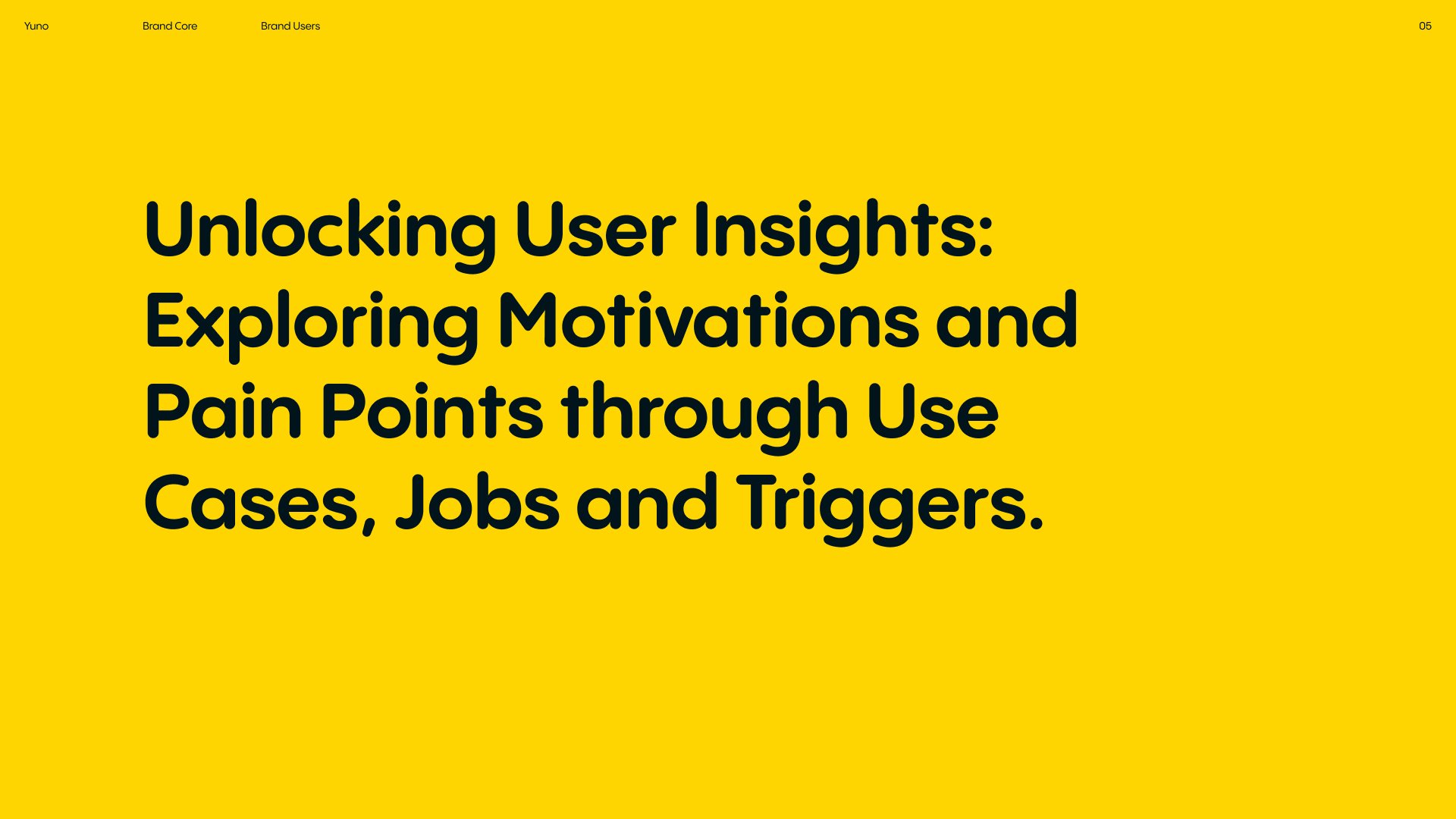
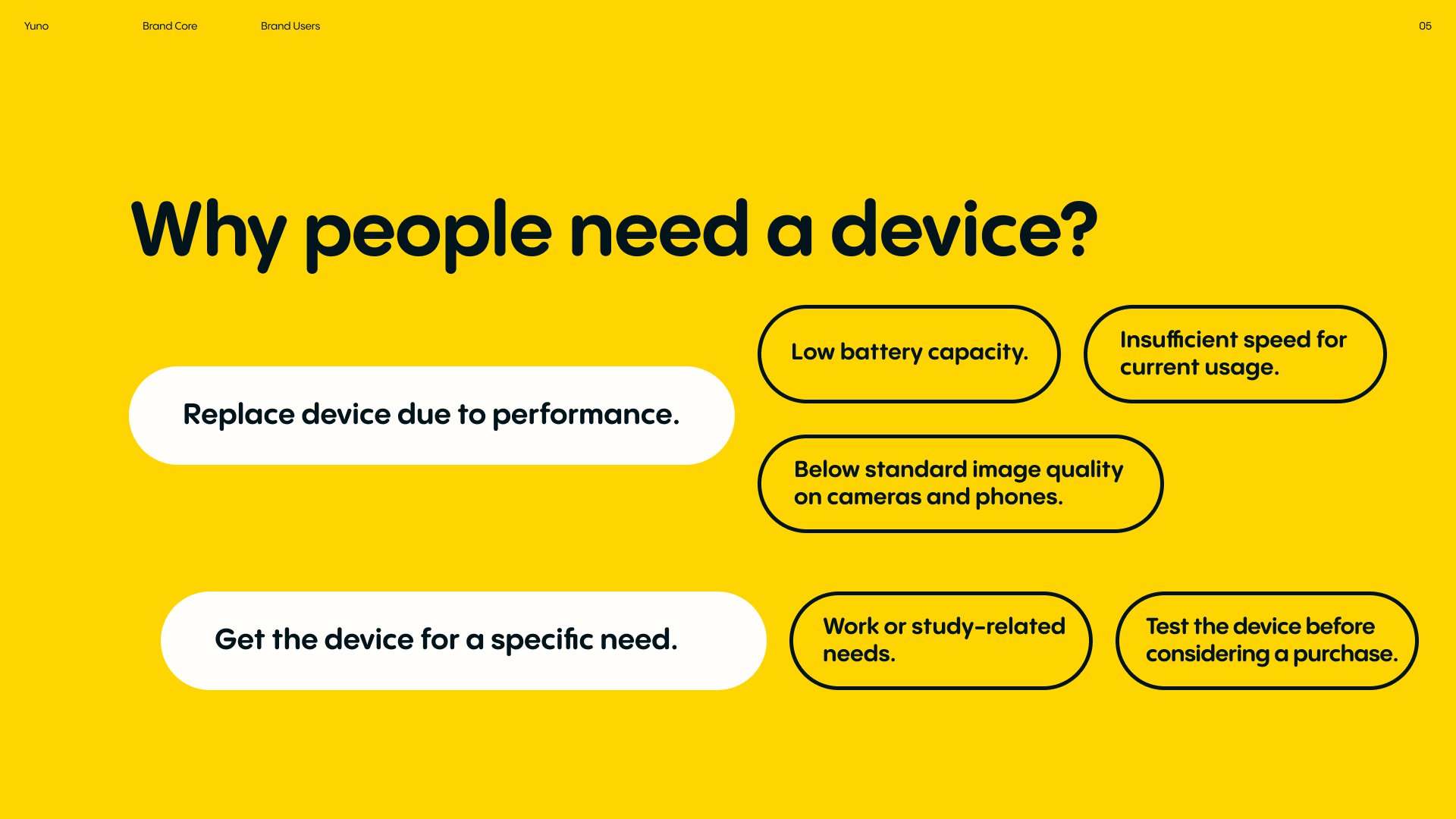

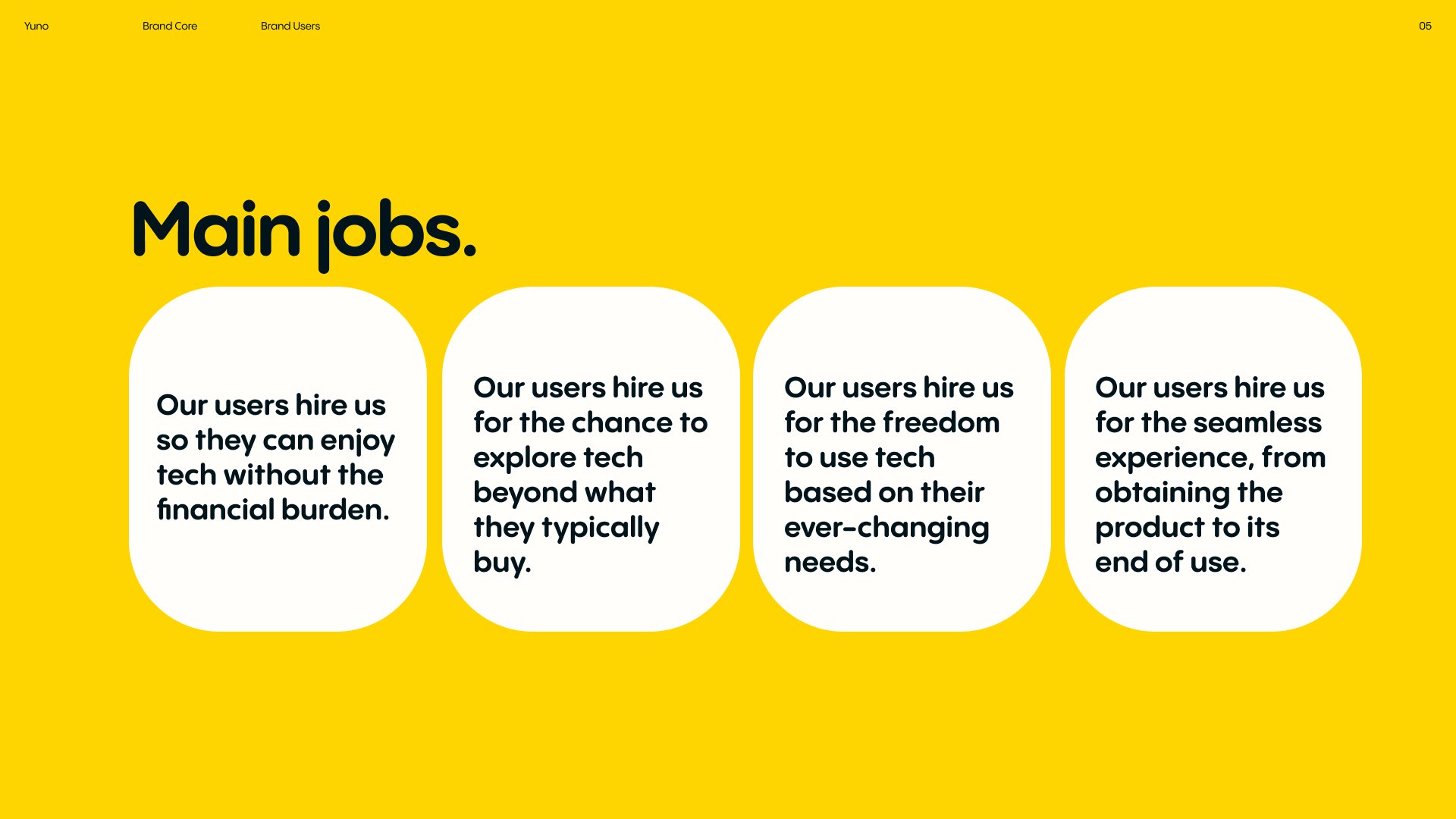
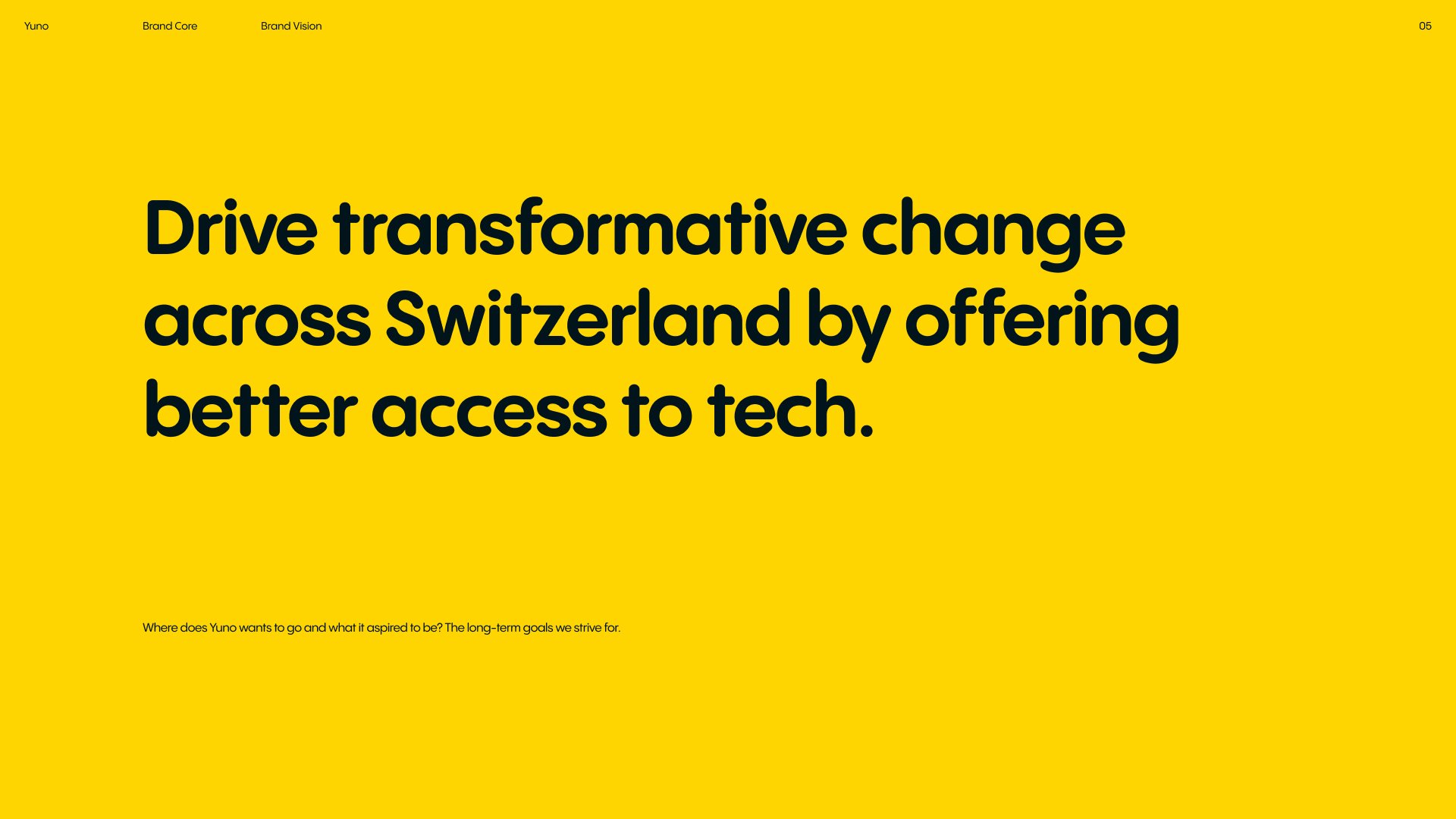

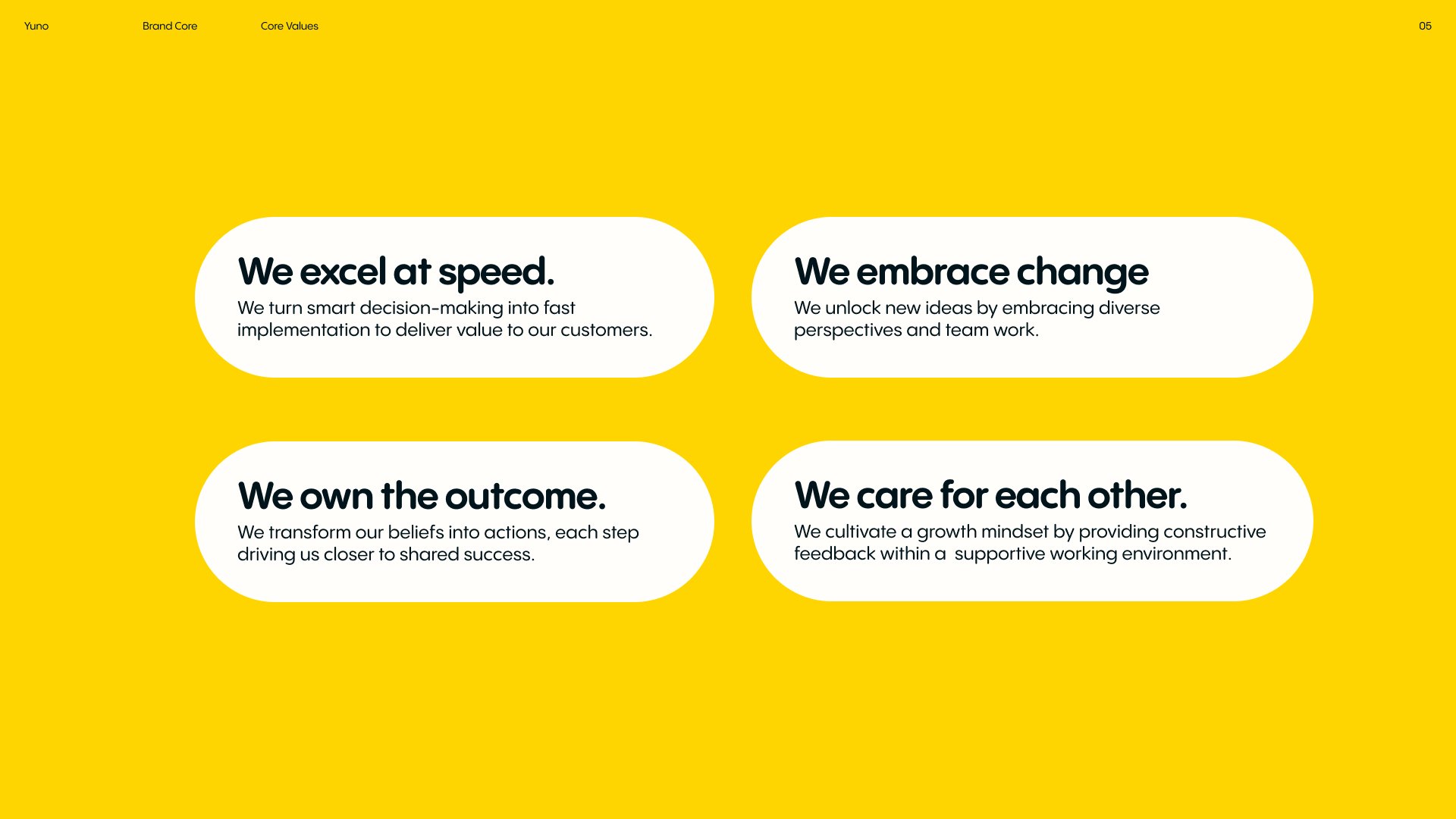
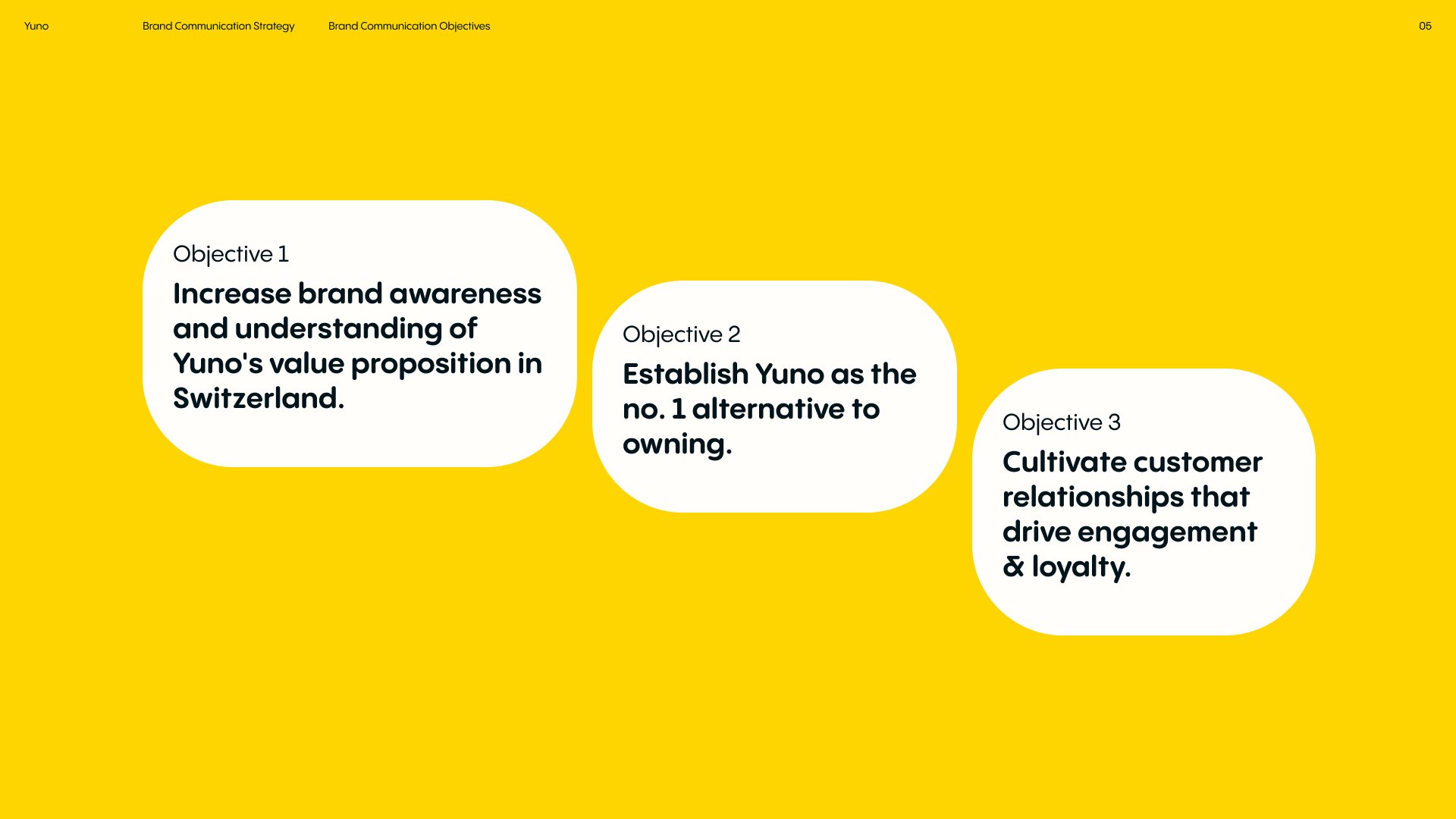

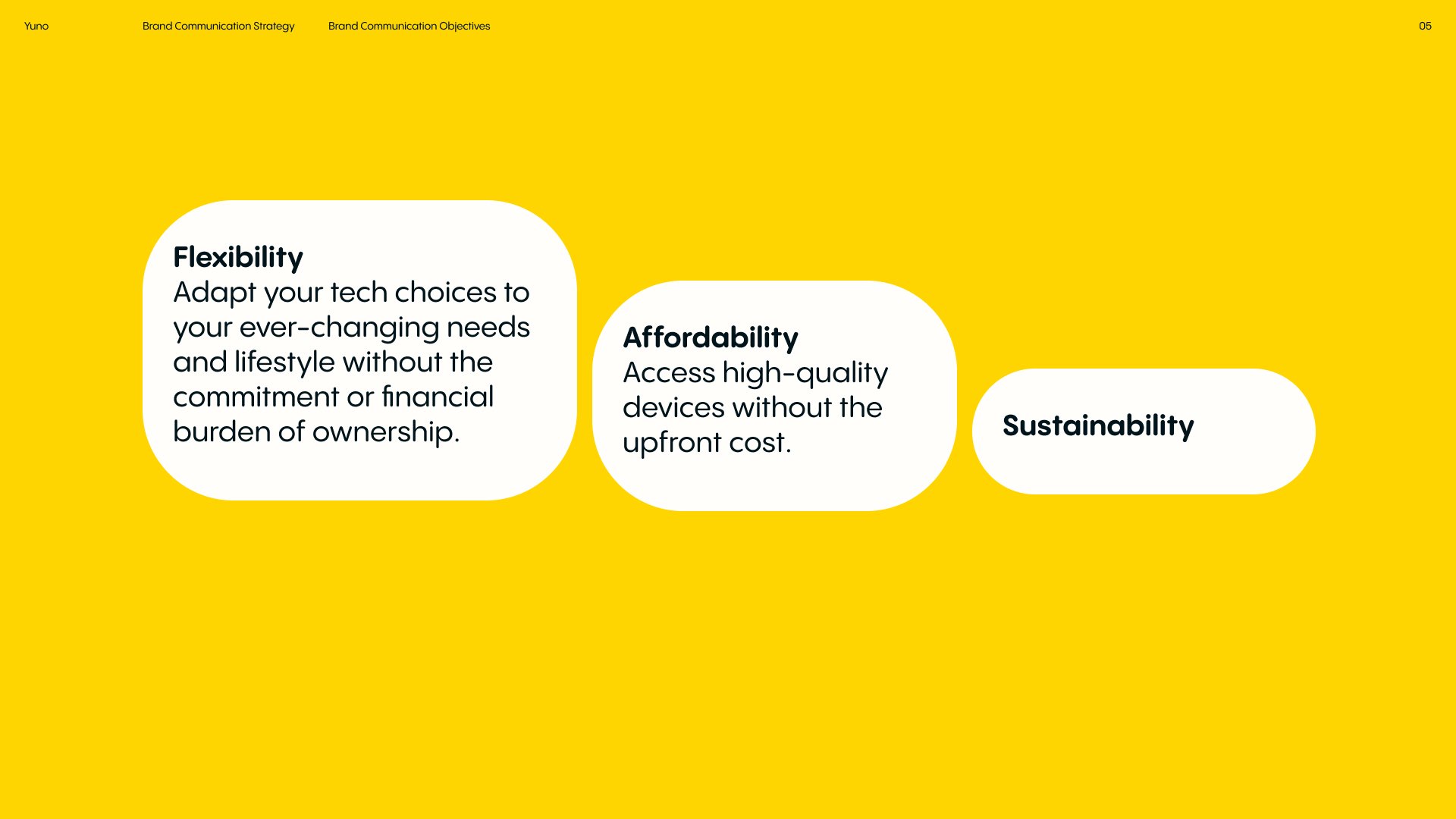
THE SOLUTION
By refining Yuno’s brand identity and messaging through these three key phases, we built a brand that resonated with users and positioned Yuno as an innovative yet trustworthy player in the market.
Partnering with Go Big Name branding studio, we:
Developed a bold and flexible visual identity for growth.
Positioned Yuno as a lifestyle brand fostering a rental community.
Designed a modular brand system adaptable across digital and physical touchpoints.
THE IMPACT
This final rebrand marked Yuno’s transformation into a truly unique and ownable brand in the Swiss market.
Brand Recognition: Consistent branding across digital channels increased recall and differentiation.
Trust & Credibility: A 30% uplift in user sign-ups correlated with the introduction of trust-building elements.
Clearer Communication: A/B testing showed a 25% increase in conversion rates after refining messaging.
The brand transformation laid the foundation for Yuno’s growth, driving user adoption and reinforcing customer loyalty. With a cohesive identity in place, we were ready to scale our marketing efforts and deepen our relationship with users.
#3 CHALLENGE
Streamlining the user experience across all channels to build trust and grow Yuno 2.0
DISCOVERY
As we scaled from Yuno 1.0 to 2.0, we aimed to move beyond a no-code platform and create a seamless, trustworthy experience. While 1.0 validated demand, key UX issues slowed adoption: classic navigation and unclear messaging made it hard to find products, unclear policies led to user confusion, and checkout friction caused cart abandonment.
PROCESS
Before fully implementing Yuno 2.0, we tested most UX improvements on Yuno 1.0, particularly in the rental journey. These tests provided real user insights, allowing us to refine the experience before scaling. However, some major changes—like checkout improvements and self-service user accounts—required backend upgrades and had to wait until Yuno 2.0’s implementation.
Yuno user journey mapping
Based on deep research data, we created a detailed user journey map to identify the most critical friction points. This documentation guided our prioritization, leading us to focus on the following key areas for optimization.
Optimizing navigation & mobile accessibility
Expanded the menu with Deals, New Arrivals, and Quick Login access to improve navigation efficiency.
Restructured the menu for a mobile-first experience, optimizing category browsing and product discovery.
Enhanced the search functionality, allowing users to find products faster with improved query recognition and predictive suggestions.
Adding Filtering & Sorting for products
Introduced dynamic filters based on category relevance to streamline product discovery.
Implemented sorting options, including price, popularity, and new arrivals, enhancing the browsing experience.
Product Page Enhancements
Replaced static color swatches with actual product images, improving selection confidence.
Integrated a storage selector, allowing users to choose capacity seamlessly.
Added a price validity indicator to set clear expectations on pricing duration.
Optimizing Cart & Checkout Flow
Introduced an in-cart edit option, reducing friction and improving conversion rates.
Implemented similar product recommendations to increase average basket size.
Displayed payment methods upfront to remove uncertainty and reduce checkout drop-offs.
Designed an empty cart state with best-seller recommendations to re-engage users.
THE SOLUTION
Yuno 2.0 launched in November 2023 with a focus on seamless transition and enhanced user experience. Beyond refining our existing UX, we introduced new features previously limited by our no-code platform, unlocking greater flexibility and scalability.
Key enhancements included:
• Successful multi-language expansion and entry into Romandie, extending our market reach.
• Self-service user accounts, giving customers more control over their rentals.
• A scalable design system, streamlining collaboration between design and development.
THE IMPACT
Yuno 2.0 successfully launched without disrupting existing user flows, maintaining rental activity while introducing an upgraded experience. Our structured design-to-development workflow enabled faster implementation and clear communication between teams.
Key Outcomes by the End of 2023:
• 7,476 active subscriptions from 5,500 customers
• 12.8 months average contract duration, reflecting strong retention
• 8,319 products owned, showcasing inventory growth
By prioritizing user trust, flexibility, and seamless design, Yuno not only disrupted the market but set a new standard for tech rentals in Switzerland.
CLOSING CHAPTER
Yuno was part of Migros Group, but after a strategic shift and leadership change, Migros decided to refocus on its core supermarket business and step away from startup ventures. As a result, Yuno closed its doors in September 2024.
I’m incredibly grateful for this enriching and thrilling experience. We built a product that our users loved, and we embraced every challenge that came our way. It was a journey of innovation, learning, and growth, and I’m proud of what we accomplished.






